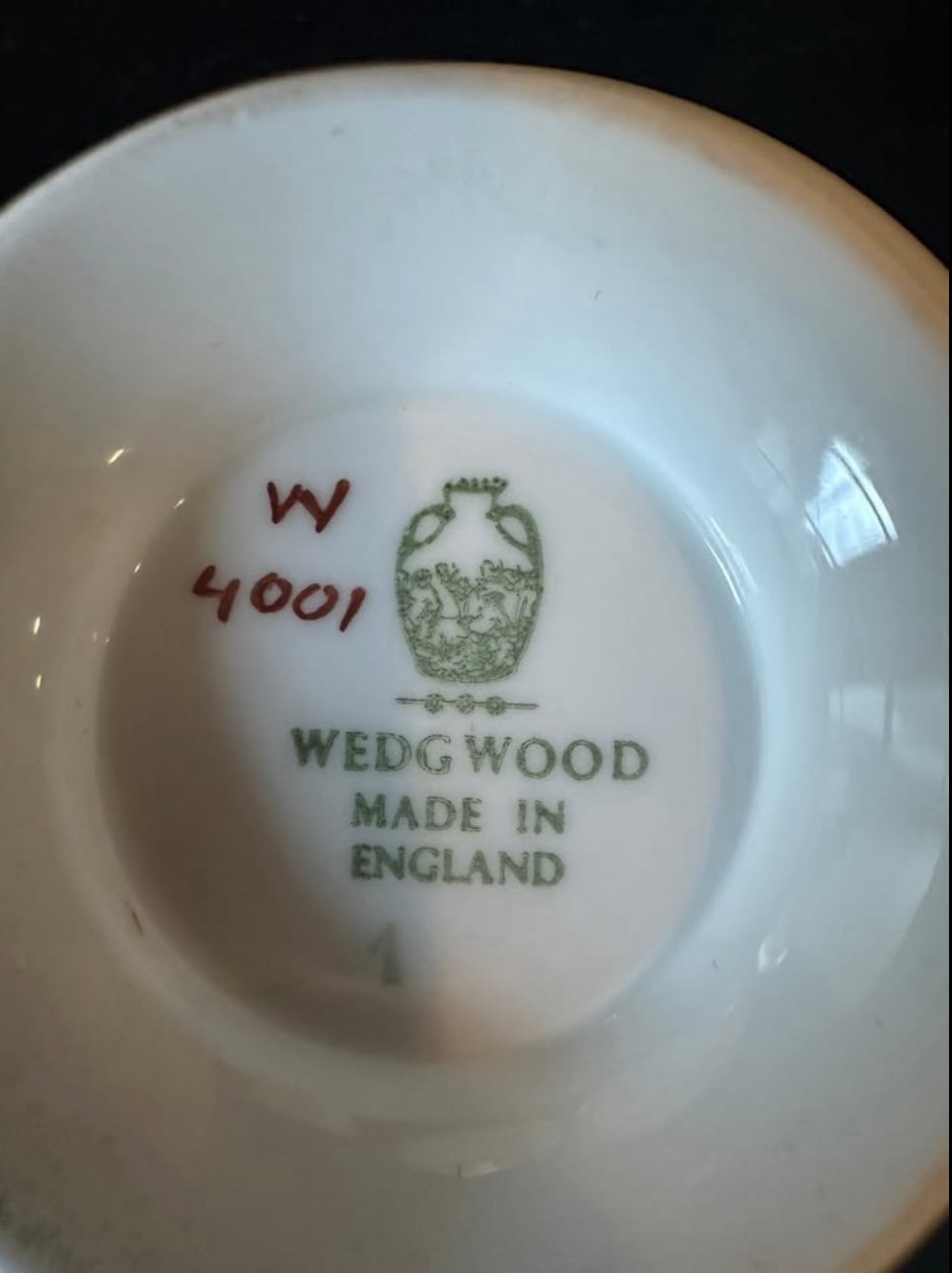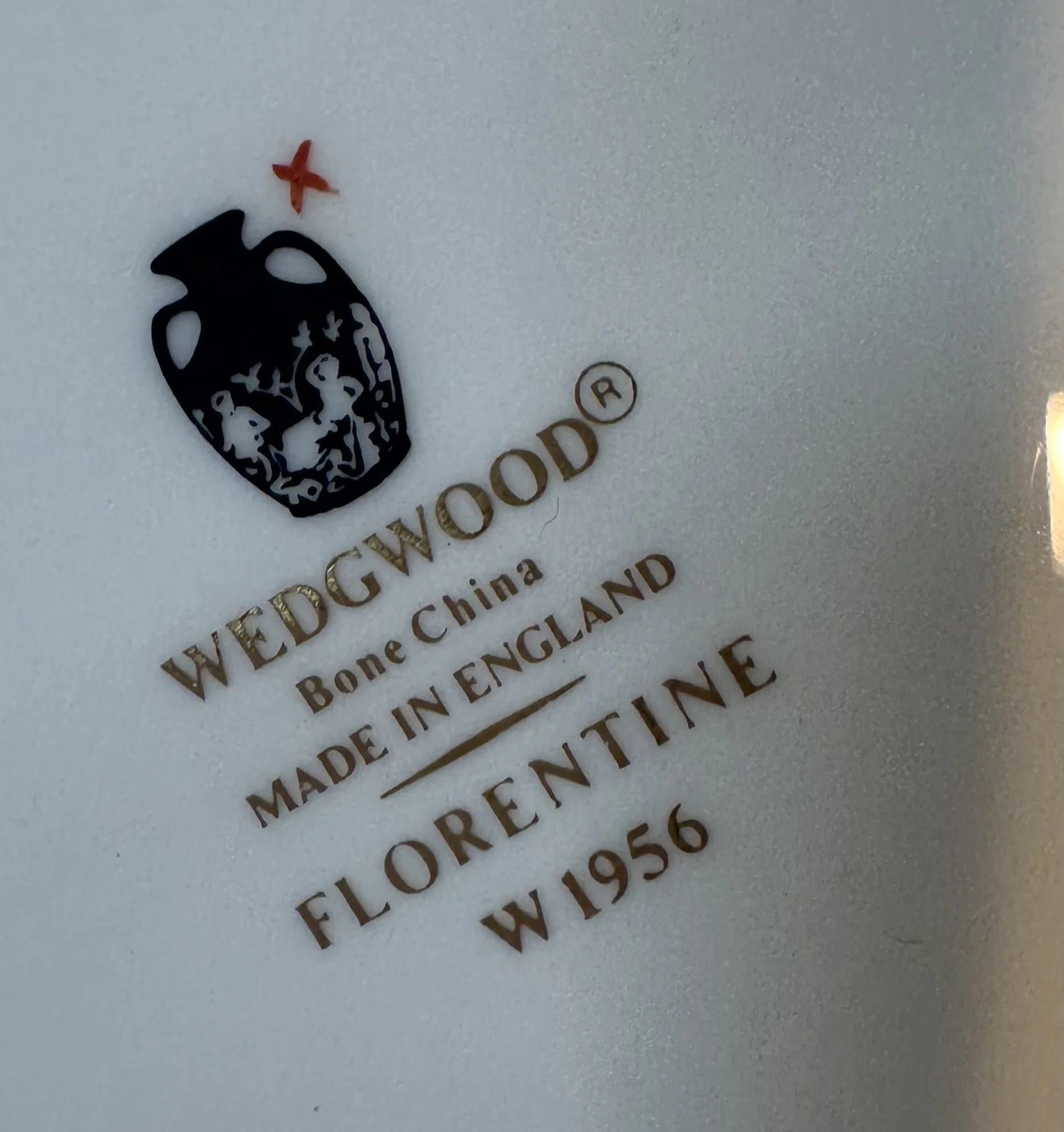Dating your Wedgwood china
🏷️ A Collector’s Guide to Wedgwood China Backstamps: How to Date Your Pieces
Wedgwood is one of the most respected names in English fine china. While many people recognize its iconic Jasperware, Wedgwood also produced an extraordinary range of bone china dinnerware and tea sets that remain highly collectible today.
One of the best ways to date and authenticate your Wedgwood china is through its backstamp—the printed or impressed mark on the underside of the piece.
This guide focuses exclusively on Wedgwood bone china backstamps, with photos, tips, and a timeline to help you identify production periods with confidence.
📅 Wedgwood China Backstamps by Era
🔹 1891–1907: "WEDGWOOD ENGLAND" (Printed or Impressed)
Following the McKinley Tariff Act in the U.S., Wedgwood began marking export china with “ENGLAND.”
Backstamps from this era are often simple, sometimes green or black, and may be accompanied by a pattern name or number.
Bone china pieces are less common from this early period, but do exist in select dinnerware lines.
🔹 1908–1930: “WEDGWOOD” with Pattern Name
Printed backstamps now regularly include pattern names (e.g., "Columbia," "Cornucopia").
May still say “ENGLAND”, but “MADE IN ENGLAND” appears more frequently by the 1920s.
Often printed in green, black, or blue ink.
🔹 1930s–1960s: “WEDGWOOD BONE CHINA / MADE IN ENGLAND”
Introduction of the full backstamp for bone china:
“WEDGWOOD BONE CHINA / MADE IN ENGLAND”Often includes the pattern name, registry numbers, and/or gold trim
Colors vary: green and black are common, with gold stamps on luxury lines
Quality control stamps (e.g., “A” for first quality) also begin appearing
📸 Example:
🔹 1960s–1980s: Stylized Logo with “®” Symbol
More modern, clean font
Includes the ® (registered trademark) symbol by the 1970s
Still reads “WEDGWOOD BONE CHINA / MADE IN ENGLAND”
Pattern names remain part of the backstamp or are printed nearby
📸 Example:
🔹 1990s–Present: Royal Doulton & Beyond
Wedgwood merged with Royal Doulton in 1986, and stamps started to reflect new branding.
Some china is still marked “MADE IN ENGLAND,” but pieces may be made elsewhere post-2000s.
Expect to see gray or gold printed logos, often with trademark symbols.
Many pieces include barcodes or pattern codes near the logo.
📸 Example:
🔍 How to Read Wedgwood Date Codes (China-Specific)
Wedgwood bone china pieces from circa 1920–1984 may include a 3-letter date code, often printed or impressed near the backstamp.
First letter = potter or batch code (ignore for dating)
Second letter = month (A = Jan, L = Dec)
Third letter = year, starting with A = 1924, B = 1925, etc.
📌 Example:
“MAU”
M = irrelevant (batch)
A = January
U = 1956
This system helps pinpoint the exact production month and year of china pieces from this mid-century period.
💡 Tips for Collectors and Resellers
Pre-1930 china is less common than Jasperware—look for thin bone china with early printed marks
Gold-stamped backstamps often indicate higher-end lines (Runnymede, Amherst, etc.)
Modern patterns (post-2000) may lack “England” in the mark—check box or barcode if available
A piece marked only “Wedgwood” and nothing else may be pre-1891 (but check material—it may be earthenware or Jasperware)
Looking for Authentic Vintage Wedgwood?
While individual Wedgwood pieces featured or referenced here may sell quickly, Fine Vintage Treasures regularly sources authentic Wedgwood china and related English porcelain.
👉 Browse currently available Wedgwood here:
https://www.finevintagetreasures.com/collections/wedgwood


